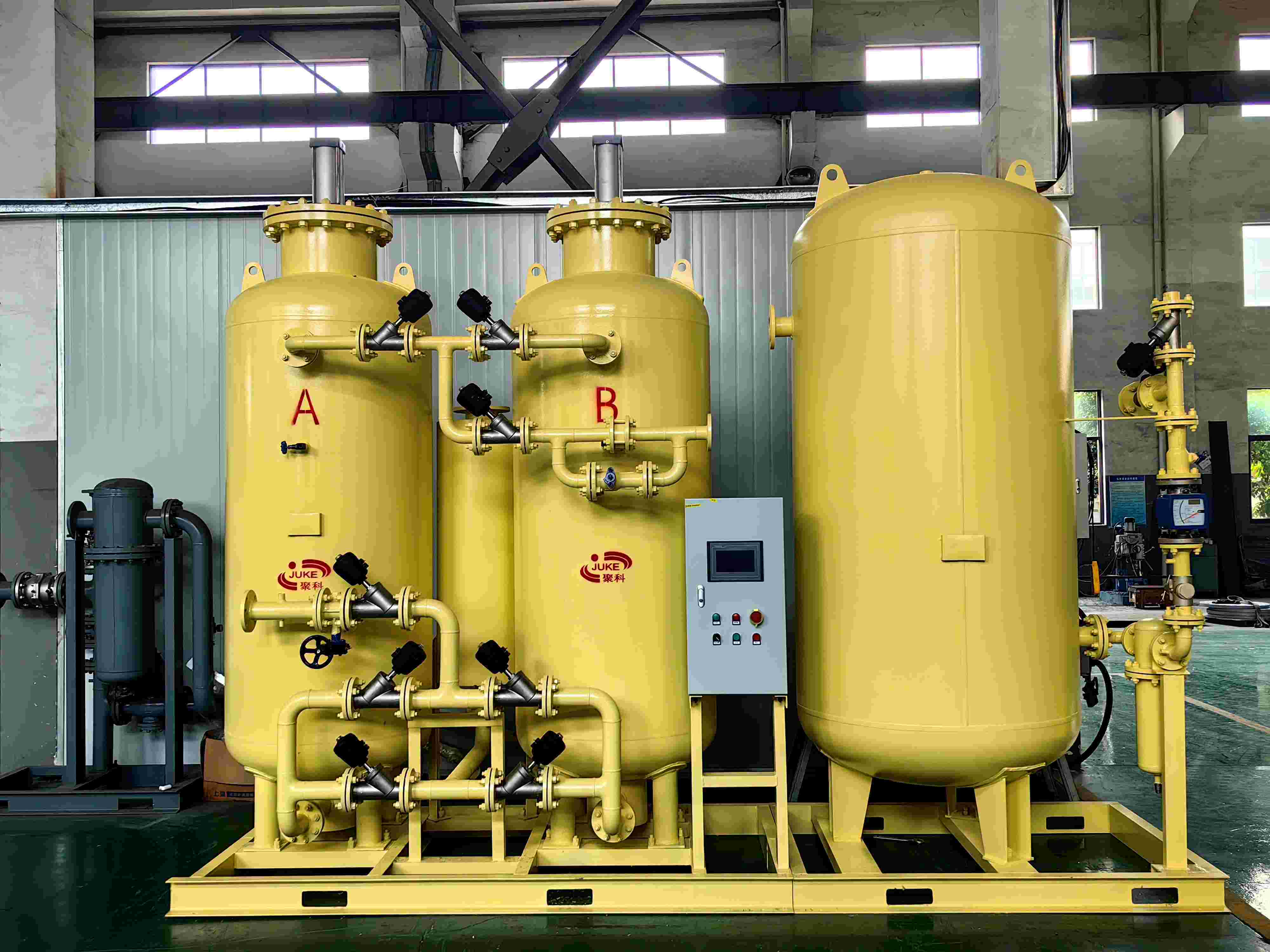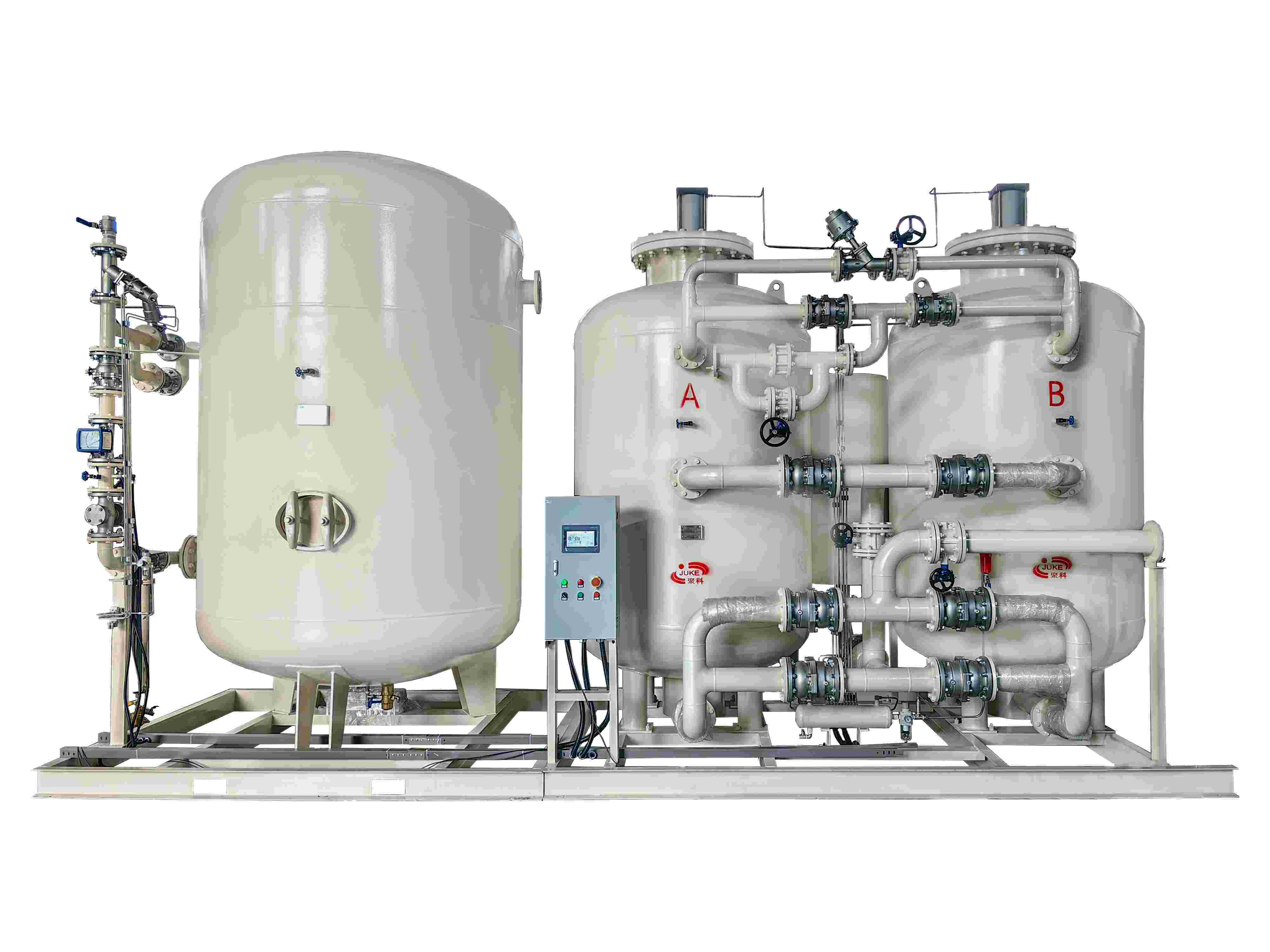What do you know about eight-valve and ten-valve nitrogen generators?
In industrial production, nitrogen, as an important inert gas, is widely used in numerous fields such as chemical engineering, electronics, and food processing. The nitrogen generator, as the key equipment for producing nitrogen, directly impacts production quality and efficiency. Let's delve into the differences between eight-valve and ten-valve nitrogen generators.
Valve Quantity and Process Flow Differences
Eight-Valve Nitrogen Generator

Eight-valve nitrogen generators typically have 8 pneumatic valves, mainly controlling the adsorption and desorption (regeneration) processes of two adsorption towers. They operate in an alternating two-tower system. While one tower adsorbs to produce nitrogen, the other undergoes regeneration through pressure reduction and purging. Valves switch according to a preset program to ensure continuous nitrogen production. The typical process flow includes adsorption, pressure equalization, pressure reduction, purging, pressurization, and then back to adsorption, repeating this cycle. During adsorption, compressed air enters the adsorption tower, and impurities such as oxygen are adsorbed, while nitrogen passes through the adsorption bed as product gas. Pressure equalization balances the pressure between the two towers, reducing energy consumption. Pressure reduction and purging remove adsorbed impurities from the adsorption tower, restoring the adsorbent's activity. Pressurization prepares for the next adsorption cycle.
Ten-Valve Nitrogen Generator

Ten-valve nitrogen generators increase the valve configuration to 10 pneumatic valves. Compared to eight-valve generators, they offer more refined process flow optimization or added auxiliary functions. These extra valves allow for complex steps like multi-stage pressure equalization, secondary purging, or more precise pressure control. Multi-stage pressure equalization makes pressure changes between the two towers smoother, reducing the impact of pressure fluctuations on the adsorbent and improving nitrogen recovery. Secondary purging more thoroughly removes residual impurities from the adsorbent, further improving nitrogen purity. This more complex process design significantly enhances the performance of ten-valve nitrogen generators.
Performance Parameter Comparison
Nitrogen Purity
Eight-valve nitrogen generators typically produce nitrogen with a purity of 99% - 99.99%, sufficient for general industrial applications like food packaging and injection molding. In food packaging, this purity effectively removes oxygen, preventing oxidation and extending shelf life. Ten-valve nitrogen generators, with their optimized process, maintain nitrogen purity at 99.9% - 99.999% or even higher. This high purity makes them suitable for industries with stringent nitrogen purity requirements, such as electronics, semiconductors, and pharmaceuticals. In semiconductor manufacturing, high-purity nitrogen is used in chip manufacturing and lithography to ensure a clean production environment and prevent impurities from affecting chip performance.
Gas Production Efficiency
Eight-valve nitrogen generators have relatively lower gas production efficiency due to longer single-tower adsorption times and lower valve switching frequency. Ten-valve generators optimize adsorption and regeneration cycles, shortening each cycle and increasing efficiency. For example, in the same time, a ten-valve generator produces more nitrogen meeting purity requirements, which is crucial for companies with high nitrogen demand and rapid supply needs.
Pressure Stability
Eight-valve nitrogen generators experience relatively larger pressure fluctuations during operation due to fewer valves and less precise pressure control. Ten-valve generators, with more valves, accurately control gas flow and pressure, resulting in more stable nitrogen output pressure. In applications requiring high pressure stability, such as some chemical reactions, stable nitrogen pressure ensures consistent reaction conditions, highlighting the advantages of ten-valve generators.
Energy Consumption
Eight-valve nitrogen generators consume more gas during regeneration purging, resulting in higher overall energy consumption. Ten-valve generators optimize purging steps, such as using secondary purging or more efficient purging gas control, reducing gas consumption during purging while maintaining adsorbent regeneration effectiveness, thus lowering energy consumption. For continuously operating nitrogen generators, reduced energy consumption saves significant operating costs.
Equipment Structure and Maintenance Characteristics
Eight-Valve Nitrogen Generator
Eight-valve nitrogen generators have a relatively simple structure and fewer potential failure points due to the lower number of valves. This makes maintenance easier and less costly. For companies with limited technical resources or a lack of specialized maintenance personnel, eight-valve generators are easier to operate and manage. Routine maintenance includes checking and replacing the adsorbent (periodically based on usage), checking valve seals, and cleaning the equipment.
Ten-Valve Nitrogen Generator
Ten-valve nitrogen generators, with more valves and a more complex control system, often require more precise pneumatic components and more powerful PLC programs for precise control. While this improves performance, it also increases maintenance difficulty and requirements. Maintenance personnel need higher expertise and skills to operate and troubleshoot complex control systems. Maintenance includes checking and upgrading the control system regularly in addition to routine checks on valves and adsorbents to ensure long-term stable operation. Despite higher maintenance demands, ten-valve generators offer superior durability and long-term stability, providing more reliable nitrogen supply throughout the equipment's lifespan.
In summary, eight-valve and ten-valve nitrogen generators differ significantly in valve quantity, process flow, performance parameters, applications, and equipment structure and maintenance. When choosing a nitrogen generator, companies should consider their specific needs, such as nitrogen purity requirements, production scale, budget, and maintenance capabilities, to make the most suitable decision. This article aims to help you better understand these two types of nitrogen generators and choose the most appropriate equipment for industrial nitrogen production.
Other areas
Oil storage and pressurized pipeline cleaning and purging of oil and gas wells, nitrogen sealing, nitrogen displacement, solvent recovery.
Used for food preservation and grain storage, pest control, food drying and sterilization, quick freezing of food, etc.
Provide the necessary gas raw materials for the preparation of new energy materials, battery production, and create an inert gas environment.
Ensure the manufacturing of electronic components and the stable operation of equipment, providing gas support for maintenance, combustion assistance, cooling, and other aspects related to thermal power generation equipment.
Nitrogen generator: Prevents oxidation, inhibits bacterial growth, and produces odors in biopharmaceuticals, providing protection throughout the process. Oxygen generator: Provides an oxygen-rich environment.
When signs of fire occur in the goaf or other locations, nitrogen injection is needed for fire prevention. The nitrogen device is lowered into the mine. It is used for annealing protective gas and sintering.
Used in the aerospace composite field, providing the necessary inert atmosphere for the molding and reinforcement processes of large carbon fiber composite wings.
Provide protection for the safety of oil and gas reserves, prevent oxidation, nitrogen sealing, and ensure dust suppression, fire prevention, and nitrogen sealing for coal reserves.

